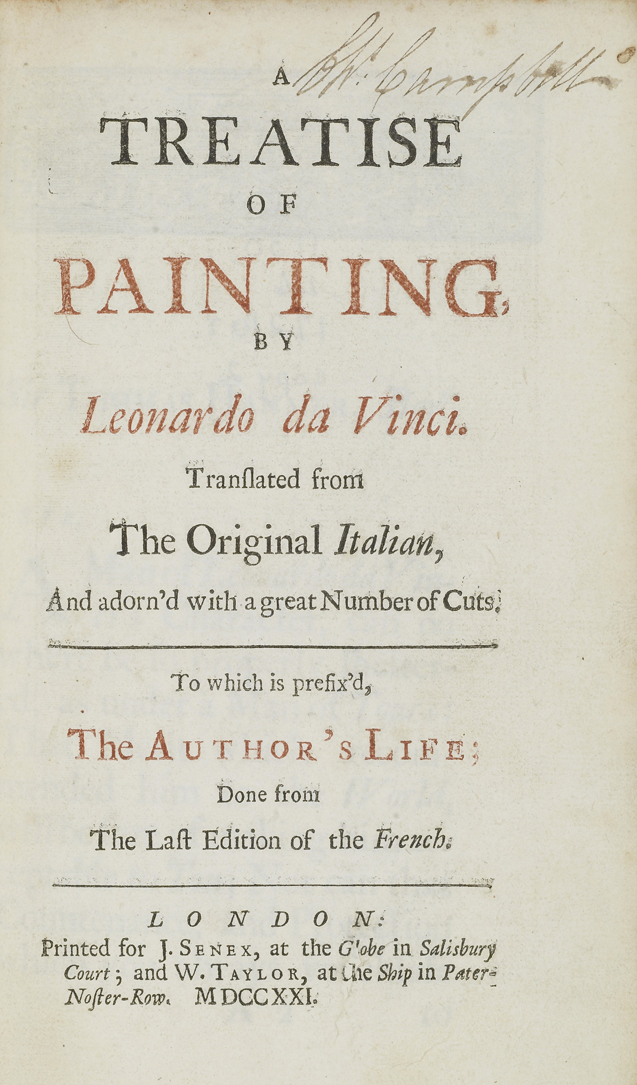
A Treatise on Painting, by Leonardo da Vinci
1721
Senex and Taylor, London
Chapter Display  |
|
Never let the same Action be seen repeated in the same Figure; neither in the principal Members, nor even in those smaller and less considerable, as the Hands or Fingers; nor ever let the same Attitude be seen twice in the same History-piece; where the Subject requires a great Number of Figures, therefore, as a Battle, a Combat of Gladiators, or the like, there being but three ways of Wounding, viz. with the Push, the Cut, and the Back-stroke, it will be necessary to diversify these three manners as much as possible; for instance, if one of your Champions be seen dealing his Blows with his Back towards the Spectator, let his Fellow appear side-ways, and a third front-wise: still varying the same Action by the different Aspects of the Actors. In Battles, a compound Motion has always a very good Effect, and seems to animate and inflame the Subject. A compound Motion is that of a Figure, when at the same time it shows Motions, that appear to be contrary; as for Example, when a Figure shows the foreparts of its Legs, and at the same time, a part of the Body, by the Profile of the Shoulders: But of this we shall speak in its place.